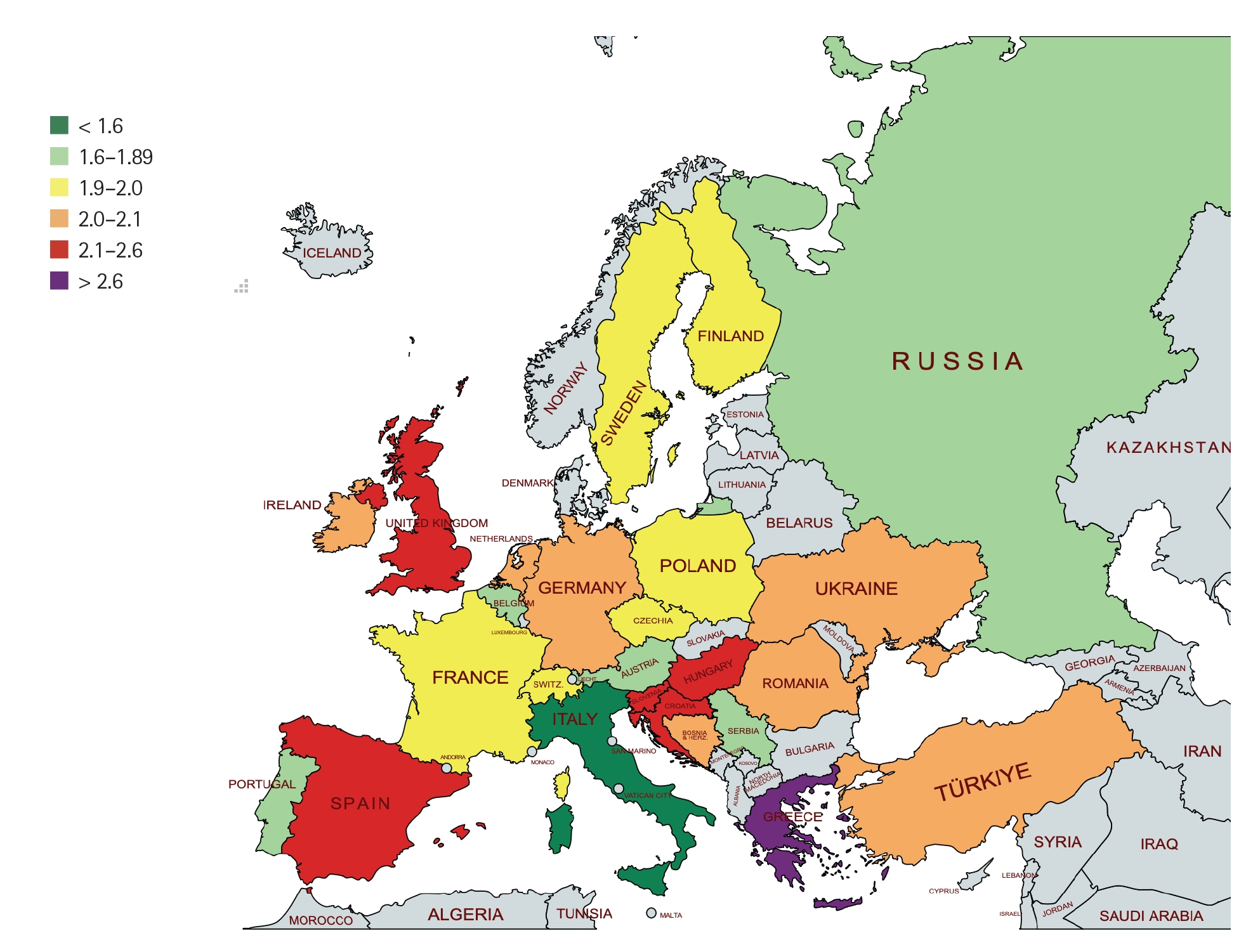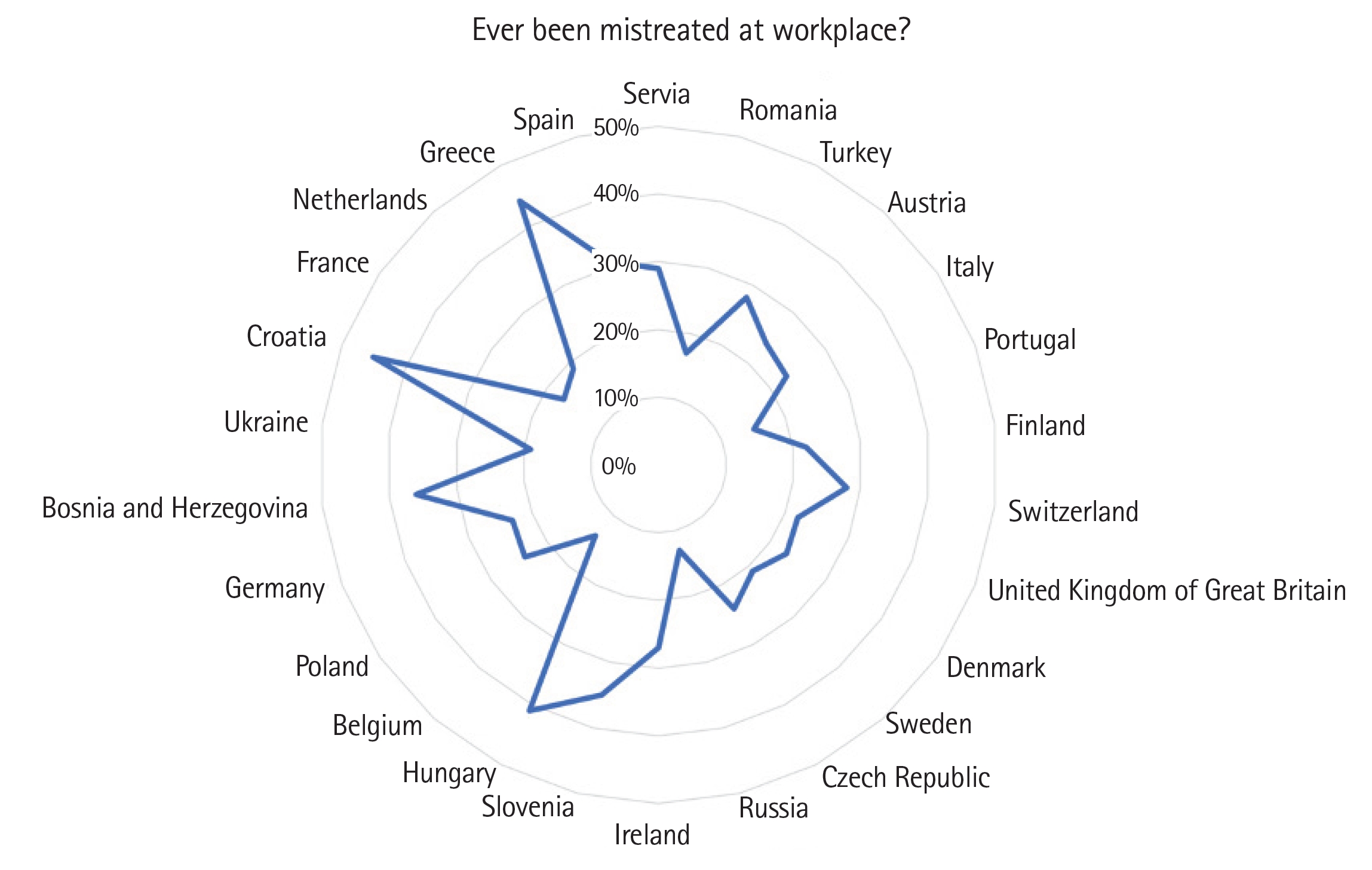1. Shanafelt TD, Noseworthy JH. Executive Leadership and Physician Well-being: Nine Organizational Strategies to Promote Engagement and Reduce Burnout. Mayo Clin Proc 2017; 92: 129-46.


2. Vranjes I, Lyubykh Z. Workplace mistreatment: A review and agenda for research. Oxford Research Encyclopedia of Business and Management. 2021, pp 3-4.
9. Frank E, Brogan D, Schiffman M. Prevalence and correlates of harassment among US women physicians. Arch Intern Med 1998; 158: 352-8.


10. Fnais N, Soobiah C, Chen MH, Lillie E, Perrier L, Tashkhandi M, et al. Harassment and discrimination in medical training: a systematic review and meta-analysis. Acad Med 2014; 89: 817-27.


11. Hyman SA, Michaels DR, Berry JM, Schildcrout JS, Mercaldo ND, Weinger MB. Risk of burnout in perioperative clinicians: a survey study and literature review. Anesthesiology 2011; 114: 194-204.


12. Bosco L, Lorello GR, Flexman AM, Hastie MJ. Women in anaesthesia: a scoping review. Br J Anaesth 2020; 124: e134-e47.


13. Zdravkovic M, Neskovic V, Berger-Estilita J. Surveys on gender issues among anaesthesiologists: where do we go from here? Journal of gender studies 2021; 30: 868-71.

14. Zdravkovic M, Osinova D, Brull SJ, Prielipp RC, Simoes CM, Berger-Estilita J, et al. Perceptions of gender equity in departmental leadership, research opportunities, and clinical work attitudes: an international survey of 11 781 anaesthesiologists. Br J Anaesth 2020; 124: e160-e70.


16. Baltar F, Brunet I. Social research 2.0: virtual snowball sampling method using Facebook. Internet research 2012; 22: 57-74.

20. Bozdogan H. Akaike's Information Criterion and Recent Developments in Information Complexity. J Math Psychol 2000; 44: 62-91.


21. Pinheiro JC, Bates DM. Approximations to the Log-Likelihood Function in the Nonlinear Mixed-Effects Model. Journal of Computational and Graphical Statistics 1995; 4: 12-35.

22. Gómez-Rubio V. ggplot2 - Elegant Graphics for Data Analysis (2nd Edition). Journal of Statistical Software, Book Reviews 2017; 77: 1-3.
23. Bates D, Mächler M, Bolker B, Walker S. Fitting Linear Mixed-Effects Models Using lme4. Journal of Statistical Software 2015; 67: 1-48.

26. Team RC. _foreign: Read Data Stored by 'Minitab', 'S', 'SAS', 'SPSS',.
29. Klasen S, Schüler D. Reforming the gender-related development index (GDI) and the gender empowerment measure (GEM): Some specific proposals. Ibero-America Institute for Economic Research. 2009.
30. Woolley AW CC, Pentland A, Hashmi N, Malone TW. Evidence for a collective intelligence factor in the performance of human groups. Science 2010; 330: 686-8.


31. Cohen BAG Jordan J, Terrell Charles. The case for diversity in the health care workforce. Health Aff (Millwood) 2002; 21: 90-102.


33. Varadarajulu S, Petruff C, Ramsey WH. Patient preferences for gender of endoscopists. Gastrointest Endosc 2002; 56: 170-3.


35. Katz J, Miller F. Defining diversity and adapting inclusion strategies on a global scale. Od Practitioner 2016; 48: 42-7.
36. Giaccone M, Di Nunzio D, Vargas O. Violence and Harassment in European Workplaces: Causes, Impacts and Policies. Dublin, European Foundation for the Improvement of Living and Working Conditions. 2015.
38. ILO ILO. Italy ratifies the ILO Convention (No. 190) on the elimination of violence and harassment in the world of work. International Labor Organization. 2021.
39. SIAARTI ISoARaIC. Gender Equity in Anaesthesia and Intensive Care: Italy’s portrait [Internet]. 2021 [2022 Feb 8]
42. Steffens MC, Viladot MA, Scheifele C. Male Majority, Female Majority, or Gender Diversity in Organizations: How Do Proportions Affect Gender Stereotyping and Women Leaders’ Well-Being? Frontiers in Psychology 2019; 10.

43. O’Connor P, Hodgins M, Woods DR, Wallwaey E, Palmen R, Van Den Brink M, et al. Organisational Characteristics That Facilitate Gender-Based Violence and Harassment in Higher Education? Administrative Sciences 2021; 11: 138.

44. Paustian-Underdahl SC, Walker LS, Woehr DJ. Gender and perceptions of leadership effectiveness: A meta-analysis of contextual moderators. Journal of applied psychology 2014; 99: 1129.


46. Koukia E, Mangoulia P, Gonis N, Katostaras T. Violence against health care staff by patient’s visitor in general hospital in Greece: Possible causes and economic crisis. Open Journal of Nursing 2013; 03: 21-7.















